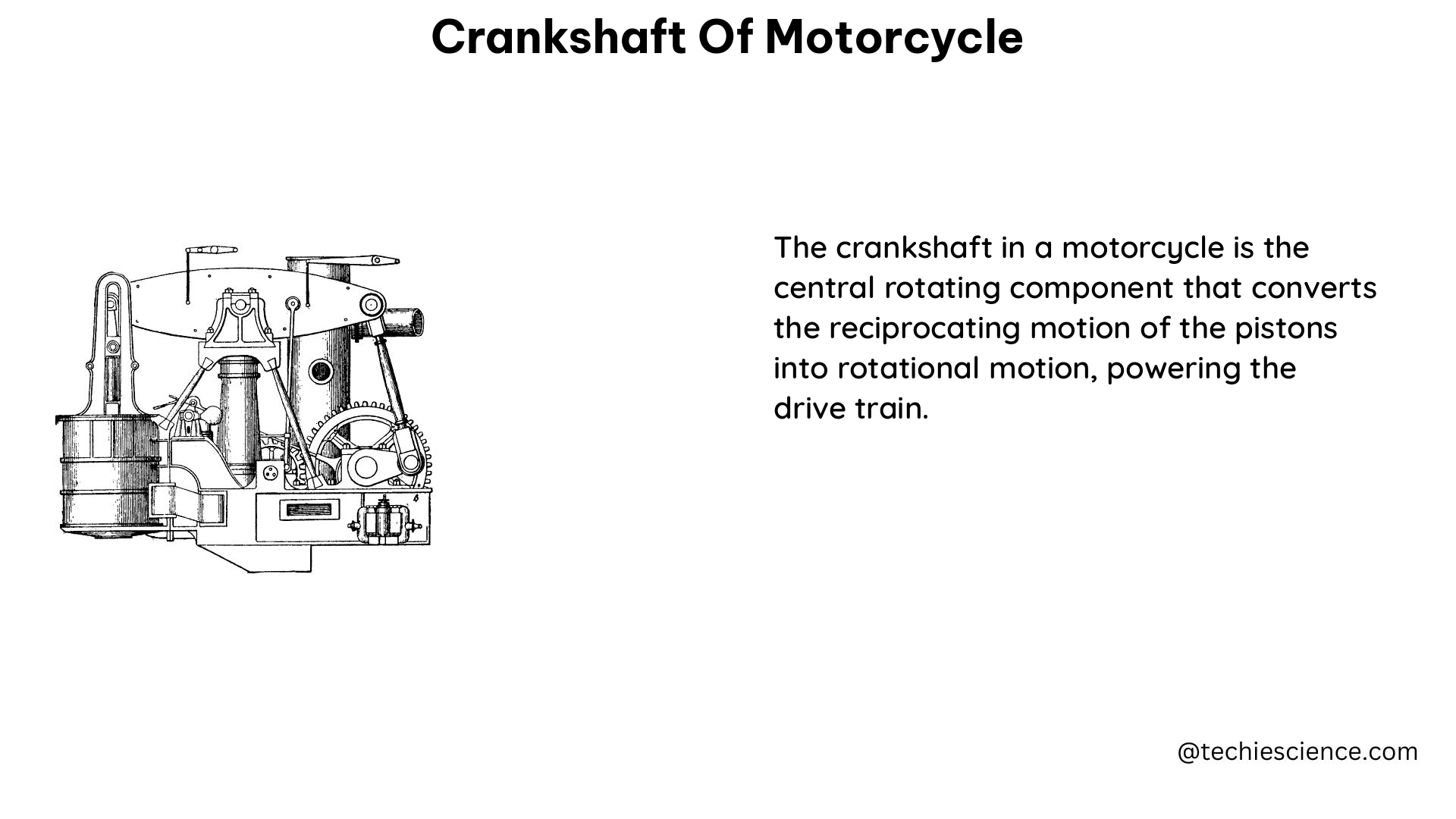The crankshaft of a motorcycle is a critical component in the engine, responsible for converting the reciprocating motion of the pistons into rotational motion that drives the transmission and ultimately powers the wheels. Understanding the technical specifications and mechanical engineering principles behind the crankshaft is essential for motorcycle enthusiasts, mechanics, and engineers alike.
Technical Specifications of Crankshaft of Motorcycle
The crankshaft of a motorcycle engine typically has several journals, or bearing surfaces, where it is supported by bearings within the engine case. These journals are precision-machined to tight tolerances, with dimensions that depend on the engine’s design and intended use.
For example, a typical motorcycle crankshaft might have a journal diameter of 50mm, with a journal surface finish of 0.1 to 0.3 microns Ra. The crankshaft’s overall length might be in the range of 200 to 300mm, depending on the engine’s configuration and number of cylinders.
Another critical dimension of the crankshaft is its run-out, or the amount of deviation from a perfect circle as the crankshaft rotates. Excessive run-out can cause problems with gear meshing and lead to premature wear or failure. For a typical motorcycle crankshaft, the run-out should be less than 0.003 inches (0.076mm) to ensure proper gear meshing and longevity.
The crankshaft’s material is also an important consideration. Common materials used for motorcycle crankshafts include steel, cast iron, and aluminum alloys. The choice of material depends on the engine’s design, performance requirements, and weight considerations.
Mechanical Engineering Principles

The crankshaft is subjected to significant loads and stresses during engine operation, requiring careful design and analysis to ensure reliability and durability. The following mechanical engineering principles are relevant to the design and analysis of motorcycle crankshafts:
Static and Dynamic Loading
The crankshaft must be able to withstand both static and dynamic loads, including the weight of the engine and the forces generated by combustion and piston motion. Finite element analysis (FEA) is often used to simulate these loads and ensure that the crankshaft is strong enough to handle them without failing.
Torsional Vibration
The crankshaft can also be subjected to torsional vibrations, which can cause fatigue and failure over time. Damping mechanisms, such as torsional dampers or flywheels, may be used to reduce these vibrations and extend the life of the crankshaft.
Material Selection
The choice of material for the crankshaft is critical, as it must be strong enough to handle the loads and stresses of engine operation, but also light enough to minimize the engine’s overall weight. Common materials for motorcycle crankshafts include steel, cast iron, and aluminum alloys.
Balancing
Balancing the crankshaft is essential to ensure smooth operation and minimize vibrations. This can be done using a balancing machine or other specialized equipment.
Measurement and Inspection
Measuring and inspecting the crankshaft’s dimensions and run-out are critical to ensuring proper operation and longevity. Specialized equipment such as dial indicators, micrometers, and coordinate measuring machines (CMMs) can be used to measure the crankshaft’s dimensions and detect any deviations from the desired specifications.
Numerical Problems
To further illustrate the concepts discussed above, here are some numerical problems related to motorcycle crankshafts:
- A motorcycle crankshaft has a journal diameter of 50mm and a journal surface finish of 0.2 microns Ra. Calculate the surface area of one journal, assuming a cylindrical surface.
Solution:
The surface area of a cylinder can be calculated using the formula A = πdL, where d is the diameter and L is the length. Assuming a journal length of 50mm, the surface area of one journal is:
A = π(0.05m)(0.05m) = 0.0007854 square meters
- A motorcycle crankshaft has a run-out of 0.005 inches (0.127mm). Calculate the angle of rotation required to produce this run-out, assuming a crankshaft radius of 50mm.
Solution:
The angle of rotation required to produce a given run-out can be calculated using the formula θ = 2arcsin(r/R), where r is the run-out and R is the radius. Substituting the given values, we get:
θ = 2arcsin(0.000127m / 0.05m) = 0.017 radians or 0.97 degrees
- A motorcycle crankshaft is made of steel with a density of 7850 kg/m^3. Calculate the weight of the crankshaft, assuming a length of 250mm and a diameter of 50mm.
Solution:
The volume of the crankshaft can be calculated using the formula V = πr^2L, where r is the radius and L is the length. Substituting the given values, we get:
V = π(0.025m)^2(0.25m) = 0.000491 square meters
The weight of the crankshaft can then be calculated using the formula W = ρV, where ρ is the density. Substituting the given and calculated values, we get:
W = (7850 kg/m^3)(0.000491 m^3) = 3.85 kg
References
- We Got A New Crankshaft Balancer At EFI University! Worth It? (2022-10-02). Retrieved from https://www.youtube.com/watch?v=4dbCGoZbPlw
- How to Measure your Crankshaft Part 1- Ovality and Taper – YouTube (2016-06-13). Retrieved from https://www.youtube.com/watch?v=be6M3pwjuos
- Determining geometrical deviations of crankshafts with limited detection possibilities due to support conditions (2022-02-15). Retrieved from https://www.sciencedirect.com/science/article/pii/S026322412101318X

The lambdageeks.com Core SME Team is a group of experienced subject matter experts from diverse scientific and technical fields including Physics, Chemistry, Technology,Electronics & Electrical Engineering, Automotive, Mechanical Engineering. Our team collaborates to create high-quality, well-researched articles on a wide range of science and technology topics for the lambdageeks.com website.
All Our Senior SME are having more than 7 Years of experience in the respective fields . They are either Working Industry Professionals or assocaited With different Universities. Refer Our Authors Page to get to know About our Core SMEs.